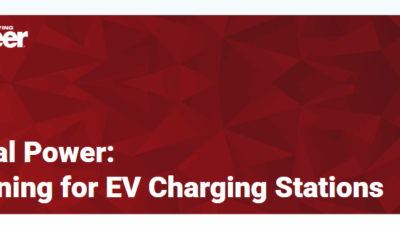The unique constraints of health care facility electrical distribution systems require engineers to be diligent when designing these systems. The presenters from the Sept. 24 webcast offer additional guidance.

The Sept. 24 "Critical Power: Selective coordination in health care buildings" webcast presenters addressed questions not covered during the live event. James Ferris (left), TLC Engineering for Architecture, and Tom Divine (right), Smith Seckman Reid, present additional information about selective coordination in health care buildings. Selective coordination localizes an overcurrent condition to restrict electrical outages to the affected equipment, circuit, or feeder.
Question: From my experience, usually time-current curves (TCCs) alone are not sufficient to evaluate selective coordination. For circuit breakers with instantaneous trips or instantaneous overrides, manufacturers publish circuit breaker selective coordination tables. Fuse manufacturers publish fuse selectivity ampere ratios. Your presentation did not cover this aspect.
Jim Ferris: True, manufacturers offer literature that shows coordination tables between their own breakers. However, this is not reflected as an acceptable approach in NFPA documents, so you will have to get the understanding of the authority having jurisdiction (AHJ). In my opinion, good design practice is to do the TCC, study the system, and not rely solely on manufacturer tables.
Q: In non-health care facilities, would one also start at the generator for coordination?
Ferris: Yes, absolutely. The generator would still limit the settings in non-health care facilities, so save yourself some time and always start at the generator.
Q: How do you address switchboard and automatic transfer switch (ATS) maintenance in a hospital? The typical one-line diagrams I see would require shutdown.
Tom Divine: A lot of hospital designs have features that facilitate certain maintenance and replacement activities. Dual-ended substations allow for transformer replacement, and isolation/bypass switches allow for replacement of switch operators, without outages. But it’s true that maintenance of major components of distribution equipment typically can’t be done without an outage. Designs that ameliorate these issues are possible, but they take a lot of equipment and a lot of space, and ultimately only move the problem lower on the one-line diagram.
Q: What is the best option when generator impedances are not available?
Ferris: You would be surprised at the data that is available. Often, you can get information on alternators from the alternator serial number and a few phone calls. Also, generators, like other components (think transformers) have evolved over the years, but the damage curve has remained relatively constant. Today’s generators have larger alternators and lower temperature rise requirements, which result in higher fault currents from these generators than older brethren. So, that would be a conservative approach to use today’s generators in your model. As a last resort, typically, the software used to model would also have default settings for generators.
Q: When you design an entire distribution, where do you leave specifying LSI breakers? At what amperage? They are certainly easy to coordinate than molded-case breakers.
Ferris: We typically would start using LSIs at 400 A by default, but it’s just a rule of thumb. I’ve put LSI as low as 60 A where it was needed.
Q: Under the 2014 edition of the National Electrical Code (NEC), selective coordination is required only up to 0.1 sec even though the definition of "selective coordination" doesn’t support that. Correct? How about facilities other than hospitals?
Divine: Strictly interpreted, the definition of selective coordination in the 2014 NEC doesn’t allow for compromise. The language is stringent: "all operating times, all available overcurrents." I’m not aware of any abrogation of the strict definition for other types of facilities, though those may emerge in future editions. A number of jurisdictions have adopted less stringent definitions for selective coordination in response to the requirements of Article 700. They may continue to promulgate those less stringent standards. It’s certainly worth taking the time and effort to determine the requirements in any jurisdiction.
Q: Could you please give a concise definition of the generator decrement curve?
Ferris: It is the generator output during a fault condition.
Q: Referring to the demonstration curves that show the instantaneous portion of the overlapping curve, explain how this is properly coordinated. This seems to conflict with an earlier slide shown by Tom Divine that implied this was not coordinated.
Ferris: This gets back to NFPA 99 requirements of 0.1 sec versus 0.01 sec versus complete selectivity. Health care is defined by NFPA 99, which worked up to 0.1sec. I’ve had pro/con discussions with colleagues and this might make an interesting conversation. There are pros and cons on both sides, especially as it relates to health care.
Q: What is the NFPA 99 rule when replacing a service and generator system and connecting to an existing distribution system? Is complete downline coordination required on the existing panels?
Divine: NFPA 99 doesn’t directly address this question. The typical practice for enforcement is to require compliance for new components, but not for existing components. That approach warrants a bit of tweaking with regard to selective coordination. It’s possible to replace the source and major distribution with new devices coordinated with new upstream devices, but not with existing downstream devices. I would expect AHJs to notice that, and require that new equipment not be vulnerable to an outage caused by a downstream fault.
Q: Can you comment on how to specify the rating of the transfer switch: short circuit versus short time? With regard to short time, can you comment on duration (e.g. 30 cycles)?
Ferris: Many ATS manufacturers are offering a 3 cycle version (what it’s always been) and a 30 cycle version. I have no issue with someone specifying 30 cycle, but please think through the system. Often after, the ATS feeds a UL-listed panelboard, which is only 3-cycle rated. For the ATS, the bigger thing is to start reading up on the new UL 1008 and the impact it has on withstand ratings of transfer switches.
Q: What is the subtransient reactance?
Ferris: It’s the reactance of the generator for the first 5 cycles of a fault condition.
Q: Any suggestions on coordinating circuit breakers less than 0.1 sec as required for critical operations data centers and other facilities?
Divine: For circuit breakers, coordination to 0.01 sec is usually accomplished by selecting devices from manufacturer-provided tables that describe which devices selectively coordinate with each other. These tables are generated by direct testing of breakers in series, rather than individual breaker tests with time-current characterization. When the specifications allow for multiple manufacturers, the designer normally proves selectivity with one set of devices, and requires the supplier to demonstrate it if another manufacturer’s devices are ultimately provided.
Q: How do you coordination during design if you don’t know what equipment (breakers, generators) the contractor will use?
Ferris: We design around a specific manufacturer, and make sure that manufacturer works completely. We make sure the contractor knows where were want the expensive LSI electronic breaker then allow other vendors to submit, provided that they have pre-checked the coordination with their system, submit the study, submit revised electrical room layouts.
Q: Do any laws, codes, or standards dictate coordination study settings are actually applied?
Ferris: NFPA codes are not just relating to design, but to the final built environment, so they all apply to what is installed.
Q: It seems odd to me that the most critical facility, health care, has the exception from full coordination. Is that correct?
Divine: It’s odd if selective coordination is the only consideration in the design of an overcurrent protection system. But, it’s not. Selective coordination is often contrasted with protection as competing concerns. Coordination minimizes the extent of an outage due to overcurrent, while protection minimizes damage to equipment and injury to personnel. A hospital needs both functions. A draconian commitment to selective coordination may drive all-or nearly all-device and setting selections to the detriment of the protection function. A limited commitment to selectivity allows the designer to balance these competing concerns.
Q: How do you coordinate a feeder breaker in the paralleling gear being bigger than the generator breaker? Is this done with zone selective interlocking?
Ferris: Good question. This is a hot topic with some inspectors, so you need to work with them. My opinion is that the priority-1 loads must coordinate with the generator and have smaller breakers for certain. Priority-2 loads that do not go on the bus until you have two generators would have their load split between two generator breakers, so they can coordinate. Make sure the second generator will never shut down to conserve fuel, as coordination would not work.
Q: With circuit breakers, are there now arc reduction maintenance switches that mitigate the arc flash incident energy when turned on?
Divine: Yes. These are called, among other things, "reduced energy let-through switches." Typically, the instantaneous setting of at least one circuit breaker will be substantially reduced when the switch is active. It’s almost certain that selective coordination will be compromised when the switch is active. Otherwise, the instantaneous element would be set lower while maintaining selectivity. It’s not clear how AHJs, in general, will view these provisions, particularly in sensitive and highly visible Article 708 facilities and health care facilities. In mission critical facilities, the owner may be unwilling to accept even a temporary compromise in selectivity. A designer should verify requirements with all stakeholders before specifying such a scheme.



